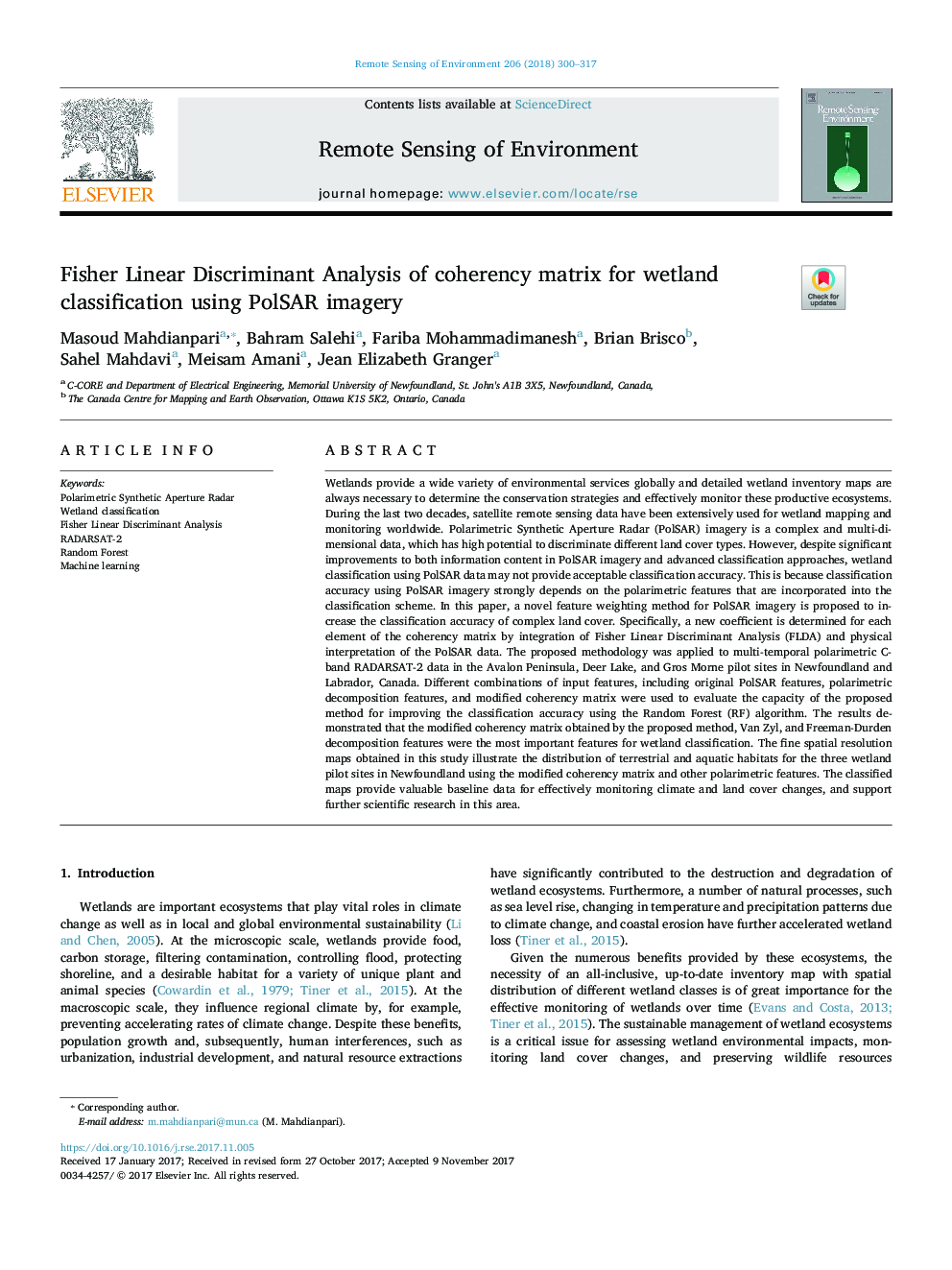| Article ID | Journal | Published Year | Pages | File Type |
|---|---|---|---|---|
| 8866748 | Remote Sensing of Environment | 2018 | 18 Pages |
Abstract
Wetlands provide a wide variety of environmental services globally and detailed wetland inventory maps are always necessary to determine the conservation strategies and effectively monitor these productive ecosystems. During the last two decades, satellite remote sensing data have been extensively used for wetland mapping and monitoring worldwide. Polarimetric Synthetic Aperture Radar (PolSAR) imagery is a complex and multi-dimensional data, which has high potential to discriminate different land cover types. However, despite significant improvements to both information content in PolSAR imagery and advanced classification approaches, wetland classification using PolSAR data may not provide acceptable classification accuracy. This is because classification accuracy using PolSAR imagery strongly depends on the polarimetric features that are incorporated into the classification scheme. In this paper, a novel feature weighting method for PolSAR imagery is proposed to increase the classification accuracy of complex land cover. Specifically, a new coefficient is determined for each element of the coherency matrix by integration of Fisher Linear Discriminant Analysis (FLDA) and physical interpretation of the PolSAR data. The proposed methodology was applied to multi-temporal polarimetric C-band RADARSAT-2 data in the Avalon Peninsula, Deer Lake, and Gros Morne pilot sites in Newfoundland and Labrador, Canada. Different combinations of input features, including original PolSAR features, polarimetric decomposition features, and modified coherency matrix were used to evaluate the capacity of the proposed method for improving the classification accuracy using the Random Forest (RF) algorithm. The results demonstrated that the modified coherency matrix obtained by the proposed method, Van Zyl, and Freeman-Durden decomposition features were the most important features for wetland classification. The fine spatial resolution maps obtained in this study illustrate the distribution of terrestrial and aquatic habitats for the three wetland pilot sites in Newfoundland using the modified coherency matrix and other polarimetric features. The classified maps provide valuable baseline data for effectively monitoring climate and land cover changes, and support further scientific research in this area.
Keywords
Related Topics
Physical Sciences and Engineering
Earth and Planetary Sciences
Computers in Earth Sciences
Authors
Masoud Mahdianpari, Bahram Salehi, Fariba Mohammadimanesh, Brian Brisco, Sahel Mahdavi, Meisam Amani, Jean Elizabeth Granger,
